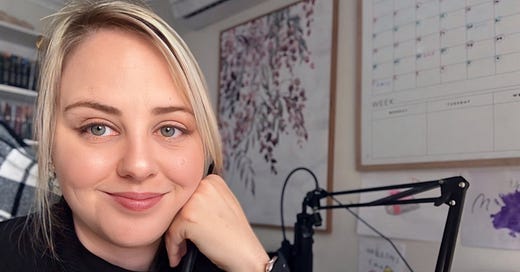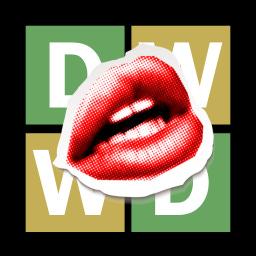Just over a year ago, I started helping my author clients migrate their newsletters from Mailchimp and MailerLite to Substack. Since then, I’ve noticed two distinct ways writers tend to approach this platform.
Both are valid. Both can work. But they lead to very different kinds of growth.
In fact, many writers start with the first and shift to the second once they gain confidence and find their voice on the platform.
1. The Traditional Author Newsletter
This is what most writers picture when they think of a newsletter: a monthly update with writing progress, book recs, a few pet photos, and any upcoming events or cover reveals. Throw in a dash of humanity (something uniquely you like an amateur roller derby team or a baking obsession) and you have your newsletter sorted.
It’s a familiar format—and it works. But what changes when you move it to Substack?
Well, for one thing, you’re getting all the features other platforms charge for, without being penalised for having a large list. That alone makes Substack a no-brainer for most authors with an existing newsletter.
This approach is safe, unobtrusive, and great for building a low-pressure connection with your readers. Send it out monthly, and when it’s time to talk about your next release, you won’t feel like you’re shouting into a void.
Will it grow your audience? Yes—albeit slower. You can grow this type of newsletter through:
Substack Recommendations
Using Substack Notes
Bringing a sign-up sheet to events
Adding a subscribe button to your website
Promoting on socials
Offering a reader magnet
Being consistent
Letting your personality shine through
It’s a solid foundation. And for many writers, that’s enough. It’s great for having a low-key, engaged list of fans you can tell about your upcoming latest release.
2. The Topical Newsletter
This is the kind of Substack that gets people excited—but also nervous. The question I get asked most?
“What would I even write about?”
Here’s the thing: with this style of Substack, you’re not just updating readers. You’re having a conversation. You’re building a world around your ideas, interests, and curiosities—and letting people in.
It’s not just about you. It’s about the overlap between your interests and those of your ideal reader.
Some examples:
A historical fiction author writing essays about strange corners of history
A rom-com author reviewing reality TV and sharing pop culture hot takes
A thriller author unpacking real-life cases and societal issues
A publishing-savvy author offering advice to emerging writers
A speculative fiction author serialising short stories or chapters
An author curating a Bookstack to champion others in their niche
This type of Substack is shareable. It’s where personality, passion, and perspective come together—and that’s exactly what fuels organic growth.
Even better? By writing about something, you draw in readers who might not know your books yet—but who already like your voice. And when your next release drops?
They’re ready.
These kinds of Substackers aren’t just here for the monthly newsletter drop, they’re essentially bloggers and freelance feature writers, podcasters and content creators. They have a lot to say…and it can’t be contained in just one book.
So—Which Is Right for You?
Ask yourself:
How much time and energy do you have for a newsletter?
Do you want it to be a low-key way to stay in touch—or a central part of your author platform?
Are you excited to explore a niche or interest beyond your books?
If you’re not sure, that’s okay.
I help authors find the right Substack strategy for their goals—and build something they actually enjoy writing.
Want to follow along as I grow my own Substack from zero?
I’m putting my own advice to the test and building a new Substack for my author brand from scratch—no Meta, no shortcuts. Just emotionally resonant branding, steady strategy, and the same tools I give my clients.
If you’re curious to see how it unfolds, paid subscribers of Virtually Annie get access to a monthly behind-the-scenes post where I share:
My real subscriber numbers
A snapshot of monthly earnings on my author Substack
What’s working (and what’s not)
Every tweak and pivot I make as I go
It’s a warts-and-all look at building an author platform on Substack—without dancing for the algorithm. I’m not shaking my ass for a tech bro, and I still believe what publishing really cares about—more than follower counts—is good writing and a connected community.
Let’s prove there are still pathways to traditional publication that are words-first, not face-first. I’m officially launching this project with consistent posting from July.
Want to follow along from the outside? Subscribe below if history, hauntings and book recommendations paired with top notch whiskeys are your thing.
Then, of course, there’s my author newsletter’s wild, unhinged cousin. I take no responsibility for what you’ll find there. Did you see yesterday’s wordle word by the way? It’s just made for my project.








Here's how I see the main types of author Substacks:
1. Those who write for their existing readers: WIP updates, new releases and promotions, events, etc.
2. Those who write for any reader: bookstackers and curators who engage around a shared love of books.
3. Those who write for writers: the ones offering behind-the-scenes looks at querying, submissions, publication, or their writing process.
4. Those who write for their potential reader: writers who connect through voice, stories, and themes.
The first group will grow slowly unless they already have a large fan base they can funnel in from another platform.
The second and third groups can grow quite a bit, since Substack is full of readers and writers. But I suspect the conversion rate to people actually buying *their* book is proportionally low.
The fourth type, to me, is the most interesting—and it’s what I’m trying to build with my own newsletter. Surprisingly, I don’t see this approach very often. Or maybe the algorithm is just hiding them from me because I am a writer who enjoys following writers.
I hypothesize that building this fourth type of Substack might be slower at first but more effective in the long run, since a higher percentage of your readers could eventually become book buyers.
Only time will tell!
I’m a little in both camps right now. Trying to get subscribers but finding that I like writing short bits that relate to what I’ve written or WIP. What I like best is that people who follow me (not necessarily subscribe) have similar interests and I like reading their bits too! Thanks Annie for the information.